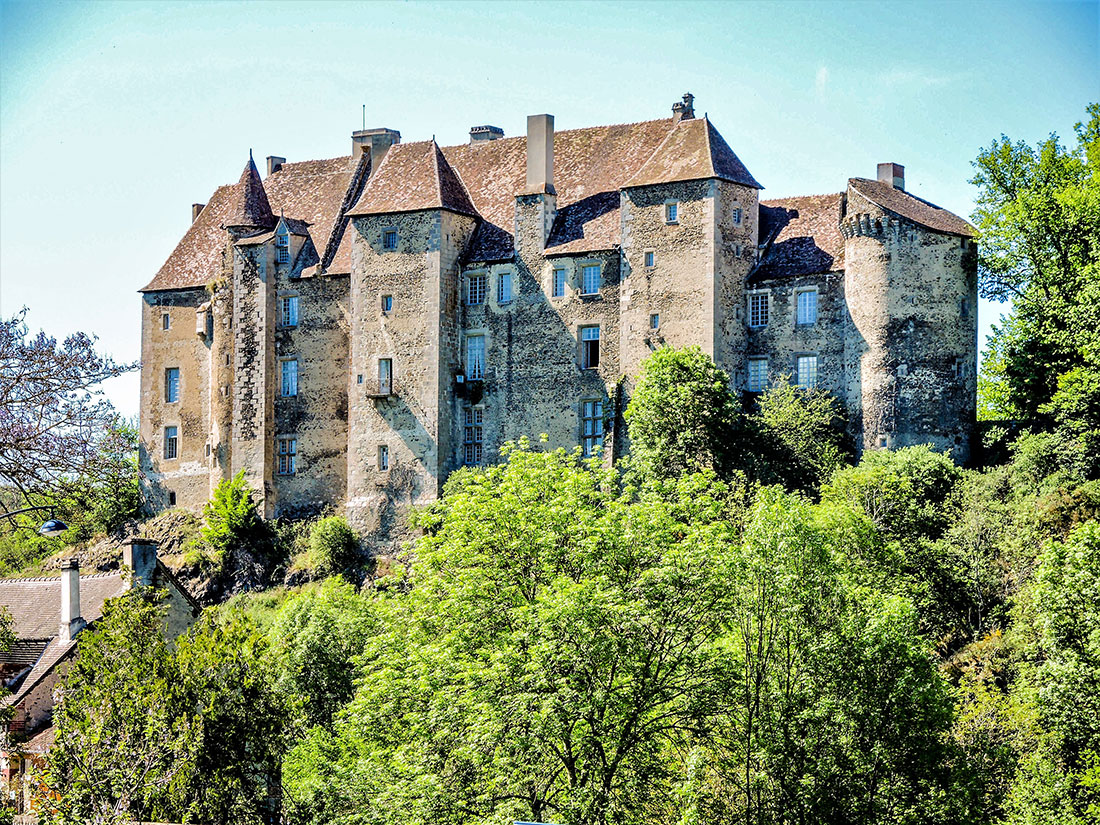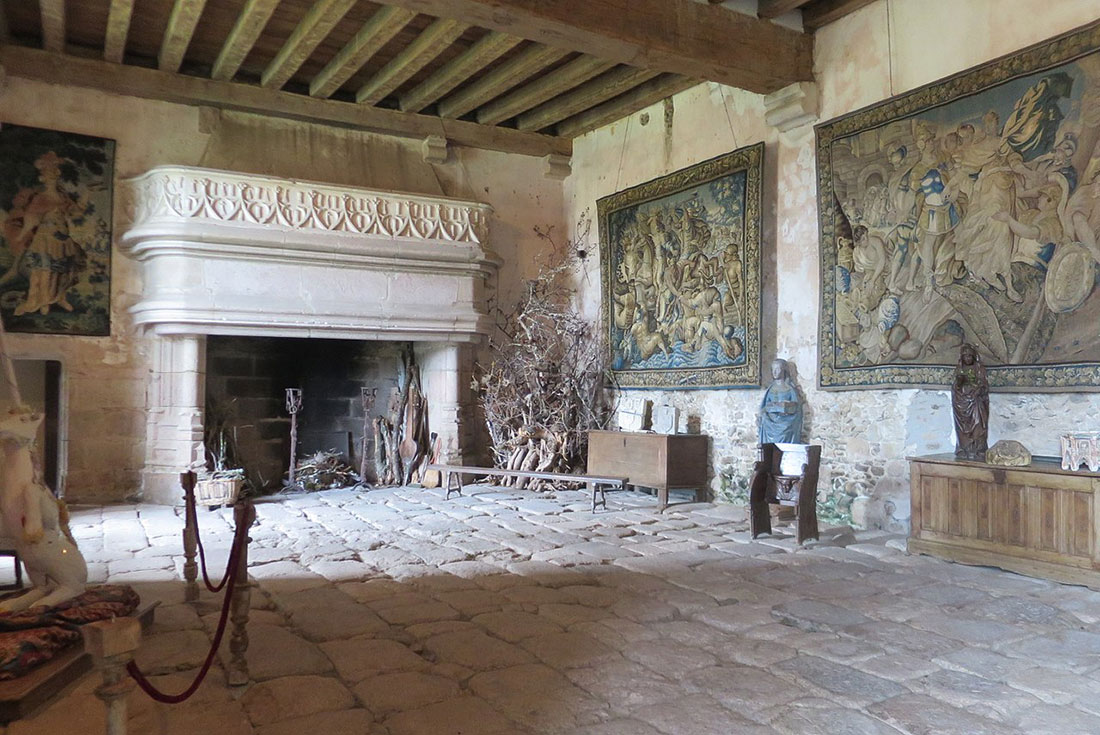The magnificent Boussac castle, which towers on the top of a rocky promontory overlooking the valley of Petit Creuse, was built in the 12th century. The first time it was seriously damaged during the Hundred Years War, and in the 15th century it was rebuilt by Marshal Jean de Brosse, an associate of Joan of Arc. This romantic place in the 19th century was a source of inspiration for the writer George Sand, who regularly stopped here to create her romance Jeanne.


The rectangular building of Boussac Castle is guarded by a large round tower, two square towers and a stair tower


De Brosse’s grandson, Jean III, continued the reconstruction work. He gave the façade a renaissance look and added external galleries that connected the towers along the façade. These galleries collapsed at the wedding of the nephew John IV of Brush in 1525, resulting in numerous victims.


About forty rooms, spread over four floors, are decorated with unusual and surprising objects, 15th-century furniture and large fireplaces with coats of arms, 18th-century woodwork and beautiful Aubusson tapestries. Visitors can see the guard room and George Sand’s bedroom, as well as admire the furniture, wood paneling and antique tapestries.


During its long history, Boussac Castle not only changed owners many times. It was also a sub-prefecture, a gendarmerie, and even an outbuilding to the fairground where pigs were kept.

In one of the halls of the castle you can see fireplaces and unique chimneys from the 15th century, listed in the register of national treasures

The highlight of the visit is, of course, George Sand’s elegantly decorated bedroom. The presence of the writer is literally felt here: an open book, slippers by the bed, a hair clip on the bedside table, a fan, a glass of water… It looks like she has just went out into the garden!

In 1841 it was here that George Sand and Prosper Mérimée accidentally discovered the Lady and the Unicorn tapestes, considered one of the masterpieces of Western art, which is today exhibited in the Musée de Cluny in Paris.

In 1965, the castle, which had fallen into disrepair, was saved from ruin. It was purchased and restored in great taste by Madame Blondeau, who still lives in the ancient building.































